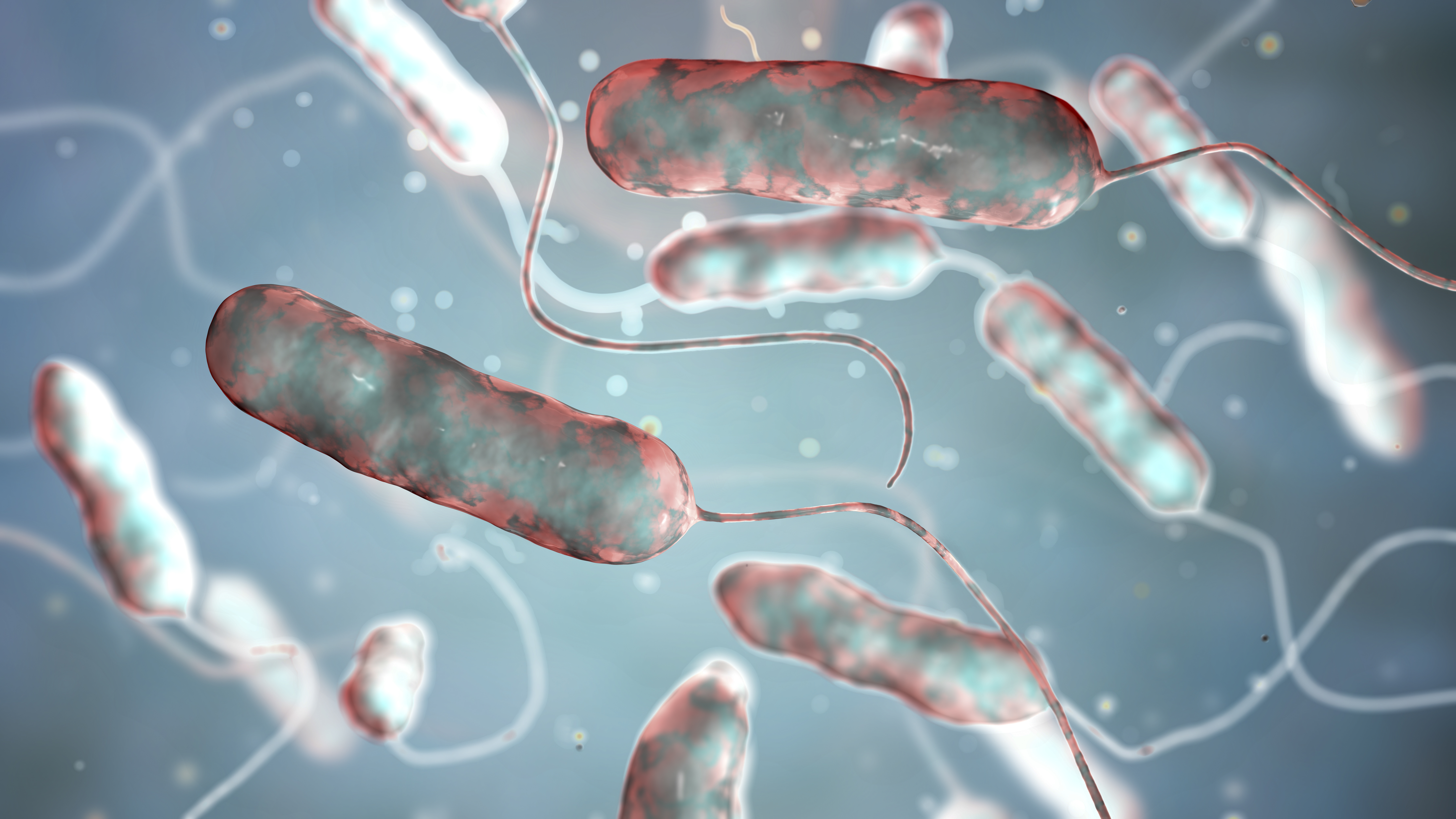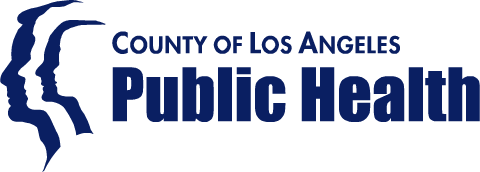
About Legionellosis
Legionellosis (lee-juh-nell-O-sis) refers to infections caused by a variety of species (types) of bacteria (germs) of the genus Legionella (lee-juh-NELL-uh), with the most identified species being Legionella pneumophila serogroup 1 (Lp1). Legionella are found throughout the natural environment in both water and soil, but at times they may grow to high levels in human-built water systems, which may lead to disease in exposed humans..
There are three (3) types of legionellosis illness in humans:
- Pontiac Fever (PF): A mild, self-limiting, flu-like illness without pneumonia (lung infection), which is mostly identified in association with outbreaks.
- Legionnaires’ Disease (LD): A pneumonia caused by Legionella bacteria.
- Extrapulmonary legionellosis (XPL): A Legionella infection in some part of the body other than the lungs (for example, an infection in a wound).
There are various tests healthcare providers may use to diagnose cases of suspected legionellosis. Legionnaires’ (lee-juh-NAIRS) Disease pneumonia and extrapulmonary legionellosis are typically treated with prescription antibiotics. Legionnaires’ Disease is associated with serious health risks: of persons who contract this illness, roughly 10% of people in the community and 25% of people in healthcare settings could die, per information from the U.S. Centers for Disease Control and Prevention (CDC).
In LA County
Los Angeles County Department of Public Health (LAC DPH) data on disease incidents in our jurisdiction may be found in our Annual Morbidity and Special Studies Reports.
- Pending
Symptoms & Treatment
There are a number of symptoms that may be present with Legionnaires’ Disease. Many people will experience:
- Runny Nose
- Cough
- Fever
- Shortness of breath.
Other symptoms may include:
- Headache
- Nausea
- Diarrhea
- Weakness
- Sore muscles
Symptoms frequently appear 2–14 days after exposure to Legionella germs.
In severe cases, the airways that lead to the lungs may become inflamed and cause breathing problems.
Higher-Risk Individuals
Although anyone may contract Legionnaires’ Disease, certain groups of people have higher risk, such as persons with other underlying health conditions or behaviors. Risk factors include (but are not limited to) the following:
- Age (50+ years)
- Cancer or recent cancer history
- Chronic heart disease
- Chronic kidney disease
- Chronic liver disease
- Chronic lung disease (emphysema, chronic obstructive pulmonary disease (COPD), etc.)
- Diabetes mellitus
- Immune-system dysfunction (immunocompromised)
- Immune-system suppression by medications (immunosuppressed)
- Recent healthcare exposure
- Recent travel (hotel stay, cruise, etc.)
- Smoking or smoking history
If your health provider suspects you may have Legionnaires’ Disease pneumonia (or another form of legionellosis), there are various tests that your doctor may order including tests of urine, sputum (phlegm), and more. Your provider may also order a chest X-ray or a computed tomography (CT) scan of your chest. Test results for Legionella may be difficult to interpret and must be interpreted by a licensed physician or licensed independent health provider in the context of a patient’s symptoms and history, since false negative and false positive test results may be possible. Tests should be interpreted only by licensed medical professionals.
After diagnosing a patient with Legionnaires’ Disease or another form of legionellosis, health providers may prescribe certain types of antibiotics that are effective against Legionella bacteria, such as fluoroquinolones, macrolides, or other antibiotics. Health providers take the patient’s health history into account when selecting the appropriate treatment. Many individuals will respond to treatment, although they may need to spend time in a hospital. Some persons with Legionnaires’ Disease, such as those with other underlying health conditions, may have a greater risk for complications or death, especially if there is a delay in treatment or if the infection is left untreated. LAC DPH recommends that individuals who are concerned they may have symptoms associated with legionellosis contact their healthcare provider or seek professional medical care.
Transmission & Prevention
Legionnaires’ Disease is caused by breathing in or accidentally swallowing into the lungs water or water droplets (mist) contaminated with Legionella. According to the CDC, Legionnaires’ Disease is not transmitted from person to person.
Inside the home, people may come into contact with Legionella bacteria through shower heads, sink faucets, ice machines, hot tubs, steam rooms, garden hoses, sprinklers, decorative fountains, soil and potting soil, humidifiers, medication nebulizers, specialized breathing equipment (CPAP, BiPAP machines), oral irrigators, water bongs, or other water fixtures. It is generally recommended that water fixtures and equipment be regularly cleaned and disinfected according to the manufacturers’ instructions and industry standards. Additionally, home plumbing projects or other construction projects may potentially expose people to warm, stagnant water, and/or could dislodge sediment (biofilm or scale) that builds up on the inside of pipes. Legionella may proliferate (grow in high numbers) in warm, stagnant water and in the sediment that may line the pipes in plumbing systems.
Outside the home, people may be exposed to Legionella when they travel, for instance if they stay in a hotel or on a cruise ship that has a large, complex water system, and/or if they use hot tub, pool, steam room, and so on. Many large buildings open to the public have cooling towers, which could potentially harbor and spread Legionella, if not properly and routinely cleaned and disinfected. People may also be potentially exposed to Legionella during visits and stays at healthcare facilities, such as hospitals, skilled nursing facilities (nursing homes), dentist offices, dialysis clinics, and other health settings. Many of these locations have more complex water systems and/or various devices or equipment that use water. Accordingly, since 2017, the Centers for Medicare & Medicaid Services (CMS) has mandated that hospitals, critical-access hospitals, and long-term care facilities have in place a water-management program to reduce the risk of Legionella and other disease-causing waterborne germs.
In the larger community, people could be exposed to Legionella at car washes, water parks, outdoor misting stations, grocery store produce departments (especially where misters are used), gym showers, steam rooms, spas, community pools, gardens, decorative fountains, other water fixtures, or through water use during agriculture and gardening, construction, instances of floods or building-water excursions (leaks), through occupational exposures, and in the natural environment.
Currently, there is no vaccine to prevent Legionnaires’ Disease pneumonia. Prevention is focused on reducing the risk of Legionella growth and spread in human-built water systems. Plumbing systems should be optimized to avoid situations where warm or room-temperature water stagnates (stands still for a long period of time), for instance in an infrequently used or broken water fixture or in dead legs of a plumbing system. Dead legs in a plumbing system refer to a stretch of pipe or plumbing with low to no water flow, such as to a faucet that is rarely used or to a water fixture that needs repair.
Buildings with cooling towers should regularly clean and disinfect their cooling towers and may benefit from consultation with industry experts.
For more information on legionellosis prevention, please visit the CDC website. The CDC offers a free toolkit on water-management programs and other, more specific, free toolkits, such as tool kits for hot tubs, decorative fountains, and more.
Since 1976, legionellosis has been a nationally notifiable disease, per U.S. Centers for Disease Control and Prevention (CDC). Per Title 17, California Code of Regulations (CCR), § 2500 and § 2505, legionellosis disease incidents and laboratory results are mandatorily reportable to the local health department (Health Officer).
LAC DPH conducts surveillance on legionellosis cases reported to us that fall within our health jurisdiction. LAC DPH staff may contact an individual (case-patient) who tested positive for a Legionella infection in order to ask that person to participate in a voluntary questionnaire (case-interview) that mainly focuses on the time period before the individual became sick (incubation period). Questions generally pertain to places the individual may have gone and certain activities the individual may have done (possible exposures). By law, information that the individual shares with LAC DPH will be shared with CDPH. LAC DPH uses the CDPH Legionellosis Case Report Form to guide the case-interview. LAC DPH uses the information provided by legionellosis case-patients to look for any possible clusters of legionellosis illness in our community. Most confirmed cases of legionellosis are sporadic, meaning that they are not associated with any known or identified cluster or outbreak.
Please note that LAC DPH does not provide health advice, diagnostic testing, or treatment for legionellosis to individual patients or members of the public.
Data and Incidence of Disease
LAC DPH data on disease incidents in our jurisdiction may be found in our Annual Morbidity and Special Studies Reports.
Water Testing for Legionella
For individual (sporadic) cases, LAC DPH does not conduct environmental testing on private residences. In the event of a potential cluster or outbreak in our jurisdiction, LAC DPH may opt to conduct environmental testing at the location(s) of suspected exposure. Members of the public who wish to test their residence for the presence of Legionella or other waterborne pathogens (disease-causing germs) should seek referrals and/or conduct a search for companies or organizations that provide such services. Please note that LAC DPH does not endorse any specific water-testing and/or water-remediation company or organization, nor does LAC DPH provide funds for or reimbursement to members of the public who wish to test their own residences. Residential property owners and managers are encouraged to refer to the CDC’s free online toolkits for reducing risk of Legionella in building water systems and in other frequent sources of potential exposure.
Resources
ACDC LAC DPH Resources
- ACDC's Epidemiologic Case History Forms Web Page
- Reported Cases of Selected Diseases (2010-2016)
- Reported Cases of Selected Diseases (2004-2009)
- Reported Cases of Selected Diseases (1998-2003)

